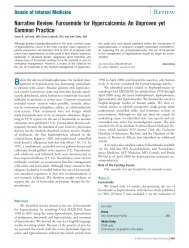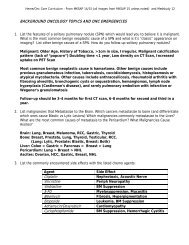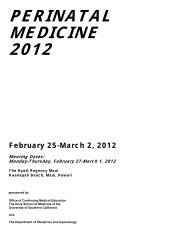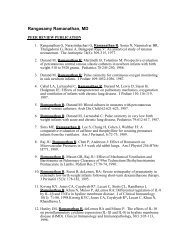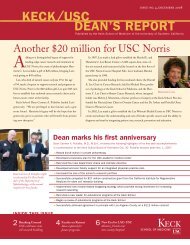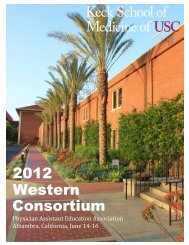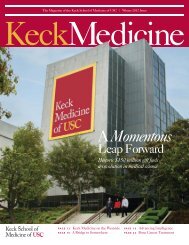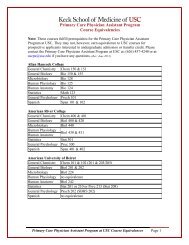Program Book - Keck School of Medicine of USC - University of ...
Program Book - Keck School of Medicine of USC - University of ...
Program Book - Keck School of Medicine of USC - University of ...
- No tags were found...
You also want an ePaper? Increase the reach of your titles
YUMPU automatically turns print PDFs into web optimized ePapers that Google loves.
Summary <strong>of</strong> CatheterManagement in CRB• Catheter preservation does not work• CRB with sepsis, obvious tunnel or exit siteinfection best managed with removal anddelayed replacement at new site• CRB without overt signs <strong>of</strong> infection can bemanaged with guidewire exchange withcomparable results to remove/replacement• S. aureus may be an exception and remove/replaceshould be considered• 3 – 6 week course <strong>of</strong> culture directed antibioticsin all casesDialysis Graft Infection• Two categories• Peri-operative• Operative wound infections• Entire graft more likely to be infected• Less likely to be treatable with partial excision• Late• Related to dialysis unit punctures• Present with exposed or eroded graft, infectedpseudoaneurysm, infected hematoma, drainingsinus tract• Infection more likely to be limitedTherapy for Dialysis GraftInfections• Culture and initiate broad spectrum antibiotics• General principle is to excise all infectedprosthetic material• Total excision requires temporary access and mayrequire complex arterial reconstruction• More likely to be required for peri-operative infections• Subtotal excision preserves cuff to allow arterialclosure, also requires temporary access• Partial excision & reconstruction can eliminate theneed for a catheter and preserve the access site• Many graft patients have limited available access sites104



